#antennaria
Text
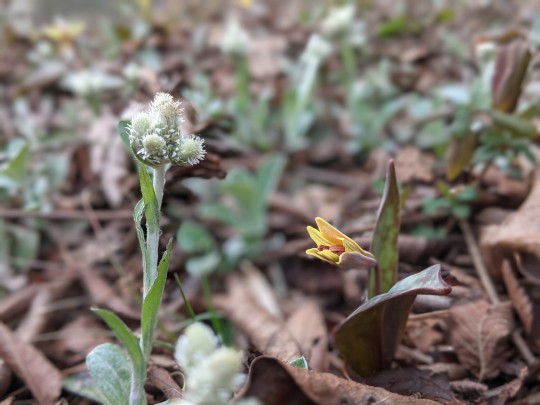
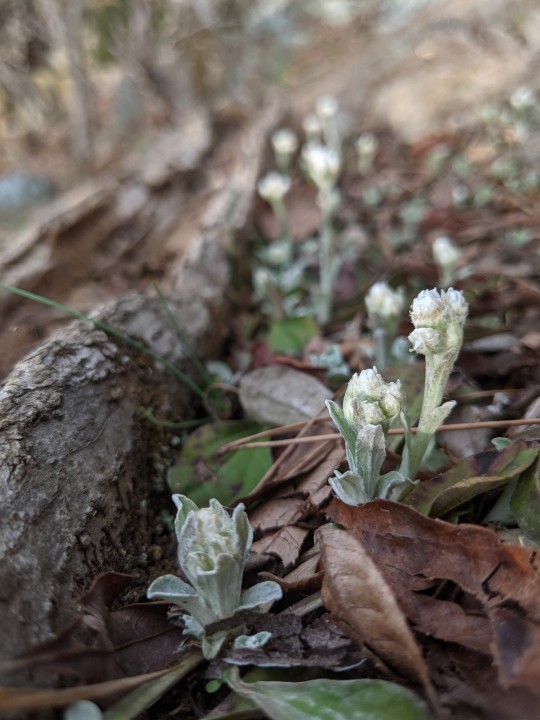
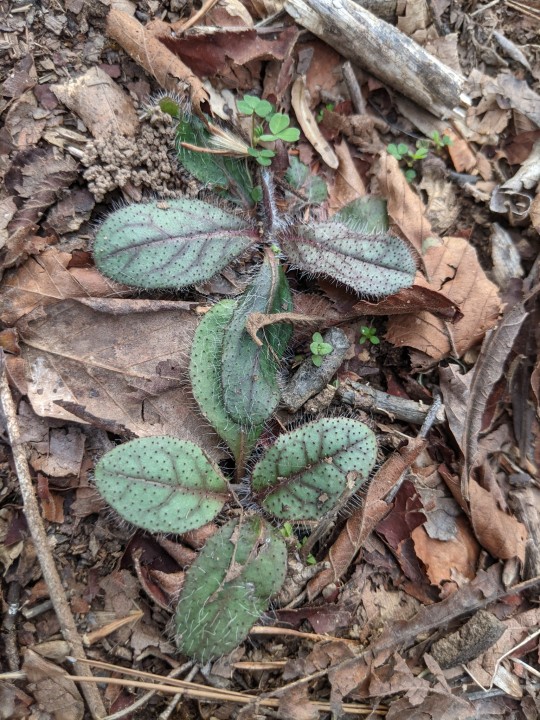
What's poppin' in late February: Part 4 of ~7
Erythronium umbilicatum - Trout Lily
Antennaria plantaginifolia/parlinii - Pussytoes, Woman's Tobacco
Which species? I don't know, as both are plausible here and they're nearly identical. Leaning towards Parlin's bc of the look of those basal leaves, but some sources say they're one species anyway, so I'm close enough.
And once you get to looking at the ground, closely, to see all the lovely little flowers there, you also notice the things that are going to be lovely little flowers. The last photo is the basal leaves of Rattlesnake Hawkweed - Hieracium venosum. It'll bloom later.
Hawkweeds are a large group of asters that are easy to mistake for dandelions if you're not paying attention, as the flowers can look really similar. The leaves are different, though, and if you're not sure, check the stem: dandelions have a soft, hollow stem, while hawkweeds' stems are solid.
#plant id#hieracium#erythronium#antennaria#wildflowers#spring wildflowers#spring ephemerals#pussytoes#woman's tobacco#trout lilies#hawkweed#rattlesnake hawkweed#hieracium venosum#antennaria parlinii#antennaria plantaginifolia#erythronium umbilicatum#parlin's pussytoes#plantain-leaf pussytoes#trout lily#disambiguation
17 notes
·
View notes
Text

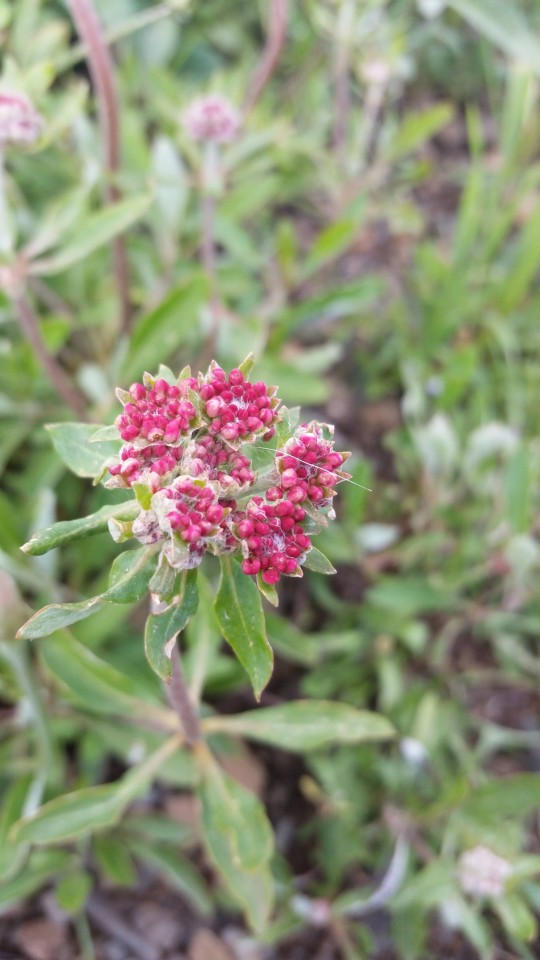
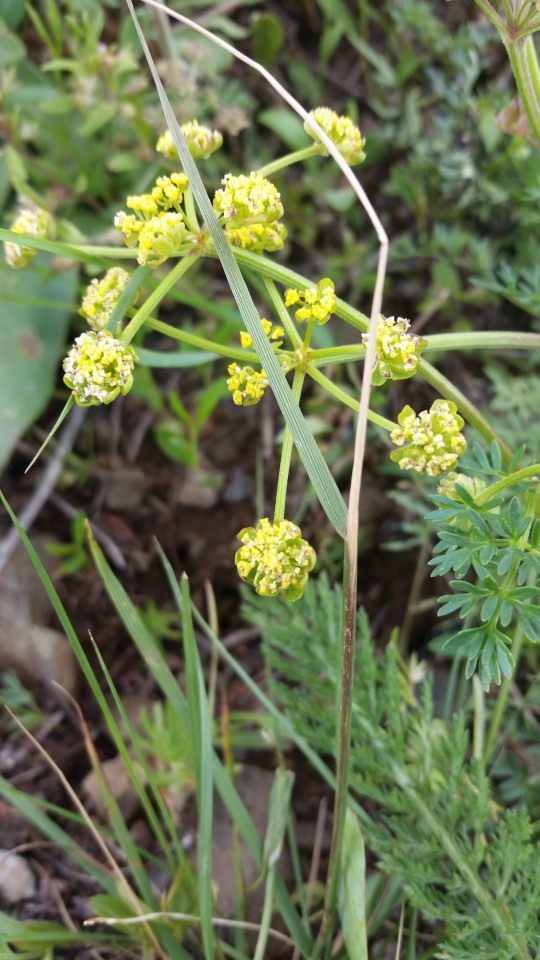

Red's and Yellow's to remind you of the passion that lurks beneath the surface.
#flowers#photography#red#yellow#floral#aesthetic#nature photography#nature#antennaria#Antennaria Rosea#Sambucus sieboldiana#Castilleja applegatei#Lomatium cous#my photos#pastelpunkpastasauce
1 note
·
View note
Video
n267_w1150 by Biodiversity Heritage Library
Via Flickr:
The Botanical register London :Printed for James Ridgway,1815-1828. biodiversitylibrary.org/page/131461
#1815#19th century#Botany#Copper engravings#England#Graphic media :#Great Britain#Hand-colored#Icones#Periodicals#Pictorial works#Plant introduction#Plants#Ornamental#Missouri Botanical Garden#Peter H. Raven Library#bhl:page=131461#dc:identifier=https://biodiversitylibrary.org/page/131461#flickr#antennaria contorta#Anaphalis contorta#Anaphalis#Eared-Leaf Pearly Everlasting#everlasting flower#botanical illustration#scientific illustration
1 note
·
View note
Text
Oh to find out there's a flower called Pussytoes
0 notes
Text
New species I’m getting this year!
Antennaria rosea (Rosy pussytoes)
Arisaema dracontium (Green dragon)
Asplenium scolopendrium (Hart’s tongue)
Calycanthus floridus (Sweetshrub)
Carex aurea (Golden sedge)
Claytonia virginica (Fairy spuds)
Echinacea pallida (Pale purple coneflower)
Equisetum hyemale (Scouring rush)
Iris setosa (Bristle-pointed iris)
Linnaea borealis (Twinflower)
Lonicera canadensis (Canadian fly honeysuckle)
Lonicera involucrata (Twinberry honeysuckle)
Osmunda claytoniana (Interrupted fern)
Passiflora incarnata (Maypop)
Pediomeleum esculentum/Psoralea esculenta (Breadroot)
Polystichum munitum (Western sword fern)
Triglochin maritma (Seaside arrowgrass)
Vaccinium macrocarpon (Large cranberry)
Viburnum acerifolium (Maple-leaved viburnum)
Viola pedata var. bicolor (Crowfoot violet)
Species I’m trying again this year after failed past attempt(s)!
Antennaria neglecta (Field pussytoes) Was planted in late summer and I was kept from watering it adequately.
Argentina anserina (Silverweed) No idea why they didn’t survive where I put them, but try, try again, elsewhere this time.
Artemisia frigida (Fringed sagebrush) First time ended up being white sage brush instead; second time plug was on its last legs on arrival, died soon after.
Chamaenerion angustifolium (Fireweed) Going to try this in yet another spot.
Dennstaedtia punctiloba (Hay-scented fern) Supposed to be aggressive! Mine was not. Maybe the one I get this year.
Dioscorea villosa (Wild yam) Planted the tuber but it never came up.
Glycyrrhiza lepidota (Wild licorice) Squirrels...Dug it up and broke the stem.
Lupinus polyphyllus (Big-leaf lupine) Leafed out nicely for its first and second year and then just didn’t come up again after its second winter.
Maianthemum racemosum (False Solomon’s seal) Squirrels! Dug it up and broke the stem.
Pteridium aquilinum latiusculum (Western bracken fern) I put it in a dry shady spot, as recommended, and it died.
Rudbeckia hirta (Black-eyed Susan) SQUIRRELS!!! Dug it up and while I was visiting home and it dried out. Couldn’t revive it.
Silene acaulis (Moss campion) Sunny, wet, amongst rocks. Check, check, check, but they keep dying on me.
Sisyrinchium montanum (Blue-eyed grass) Two places tried, two place died. I shall try a third place this year.
Viola pubescens (Downy yellow violet) FUCKING. SQUIRRELS. Dug it up while I was at work and left it to scorch and dry out in the sun. Couldn’t revive it.
Species I’m getting again because I’m fairly sure mine didn’t make it
Apocynum cannabinum (Hemp dogbane) It might not have gotten enough sunlight thanks to the white mulberry that grew over. I’ll try it in a different area.
Sagittaria latifolia (Duck potato) It may come up after all but I don’t want to take the chance of planting too late if it doesn’t.
Sparganium americanum (American bur-reed) Not sure why, but we’ll try again this year. And I may yet be surprised.
Symplocarpus foetidus (Skunk cabbage) It’s possible it’s just young and takes longer to come up than it would if it were more mature, but I don’t want to take chances since there’s only one place I can get them at.
10 notes
·
View notes
Text

Native plant miniprints posts part five! These prints will be available on my etsy on the equinox, m.20 2023.
Since part of why I wanted to work on this project is that I wanted to learn more about familiar, local plantlife (I'm on treaty 7), I figured I should share some of that information while posting them. Of you have any other information about these plants please share!
Mountain Hollyhock, Iliamna rivularis
- Related to okra and hibiscus as a mallow, which is exciting to me because I want to see if it can be used as neri in papermaking
- Like a number of our native species it needs heat to germinate, and is often prolific after a fire.
- Though ironically it's primarily found by mountain streams.
Rocky Mountain Bee Plant, Peritoma serrulata
- Can be a little stinky but VERY attractive to pollinators and great for bee keepers for honey yeilds
- Used for a yellow green dye
Rosey Pussytoes, Antennaria rosea
- Gets its name from looking like fuzzy toebeans
- Interestingly, most groups are clones and the mostly reproduce through apomixis meaning the seeds are unfertilized- so its pretty rare to find male flowers.
find the rest of the posts here, including any future additions:
1/2/3/4/5/(tbc)
#ill add tags and edit the hyperlinks and formatting tonight#that is not a job for mobile#so if u wanna wait to rb thats chill
4 notes
·
View notes
Text
Cây Hoa Chữa Bệnh - CÂY CHÂN MÈO
Tên khác: Miêu túc, cây Cúc bất tử (trắng, đỏ)
Tên khoa học: Antennaria dioica Gaertn. [gnaphalium dioecum L.]; Họ Cúc (Asteraceae).
Nguồn gốc:
Cây nguồn gốc Trung Âu, Bắc Á, Bắc Mỹ, cùng chi với cây rau khúc tẻ (Gnaphalium indicum) và Rau khúc nếp (Gnaphalium luteo-album L.).
…
NguyênLiệuLàmThuốc #ChữaHoHen
0 notes
Text
🏵️
https://www.tumblr.com/whanderlost/719903216371908608/riverwindphotography-alpine-pussytoes-antennaria
View On WordPress
0 notes
Text
Rostlina roku 2023 – KOCIÁNEK DVOUDOMÝ (Antennaria dioica)
Letos padla volba České botanické společnosti na tuhle drobnou stálezelenou trvalku, blízce příbuznou plesnivci alpskému. Podobnost se sklaničkami nezapře: kociánek roste na živinami chudých mělkých půdách v lesních lemech a světlinách, na pastvinách, vřesovištích i okrajích cest.
Celorepublikově však postupně mizí. Souvisí to ústupem pastvy a nadbytkem živin v krajině. Za kociánkem se můžete vypravit o víkendu 13. a 14. 5. 2023 (viz pozvánky v událostech na exkurzi P. Kouteckého a M. Štecha). Každý se také může zapojit do mapování kociánku 🌼

1 note
·
View note
Text

Phlox, sedge, and pussytoes (antennaria if you're shy)
1 note
·
View note
Text

Asteraceae Antennaria neglecta
Field Pussytoes
Identification via Pl@ntNet
0 notes
Photo


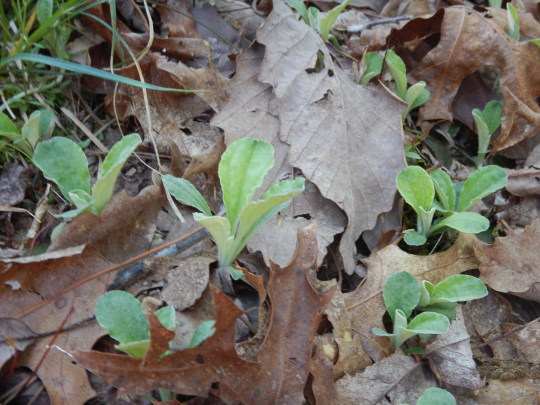
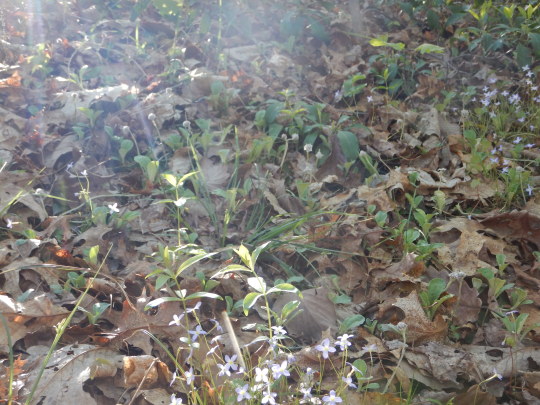
Two Pussy toe species one is common, one really should be listed as uncommon or rare in almost every county.
Antennaria plantaginifolia
Antennaria solitaria
I’ve actually never seen the second( solitary flowering pussy toes) species in person until very recently, it’s extremely uncommon and doesn’t reduce competition to the extremes that neglected and plantain leaf pussy toes do with allelopathic exudence. I’ve been taken to places where friends have said they have been reported often to have them be plantain leaf growing in alkaline soils.
Instead it is a very site specific species having to rely on full sun exposure and the shallowness of the substrate, 1-2 inches of organic over sand stone or granite, to gain an advantage, known to be found in acidic/ericaceous cliff break communities and sandstone barrens where it proliferates.
I feel like range maps do no justice when a genera is never reported in high enough numbers.

Plantain
^ for example and for some reason MI, OH, and LA are not reported as entirely green , Indiana has low reports too, Illinois and MO seem to be the most accurate. This species is very common and it blows my mind that Ohio and MI don’t have them reported knowing damn well that I have seen them in Caldwell, Richardson, and all over Adams and Scioto.
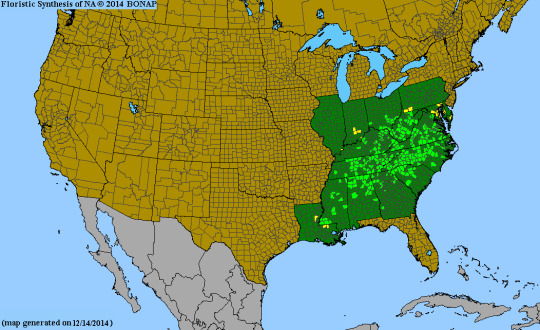
^ solitary
It’s funny, the other two species i’ve wanted to see in my region is one super rare MI serpentine native subspecies known from one spot in MI and that’s it, comparative to the western subspecies this little spot is extremely disjunct,
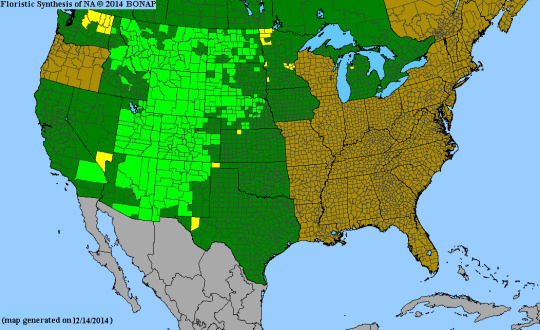

and one species that does occur in Ohio but is more associated with the Dolly Sods and the Northern Piedmont brim regions also known as Virginia pussy toes

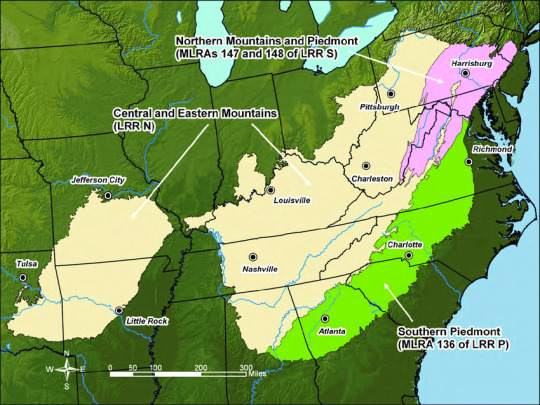
^zones of uplift from mountain forming, not to be confused with true named mountain ranges outside of piedmont. Most of whats highlighted in pink is ILP and Blue ridge, Ozarks, Ouachita ect. Which you can look up as real regional mountains. Southern piedmont is also a “complex” and Northern is also a mixed “complex”.
#botany#ecology#for the love of god update range maps#antennaria#antennaria plantaginifolia#antennaria solitaria#plants#wildflowers#Kentucky#ken god bless it tucky
25 notes
·
View notes
Text

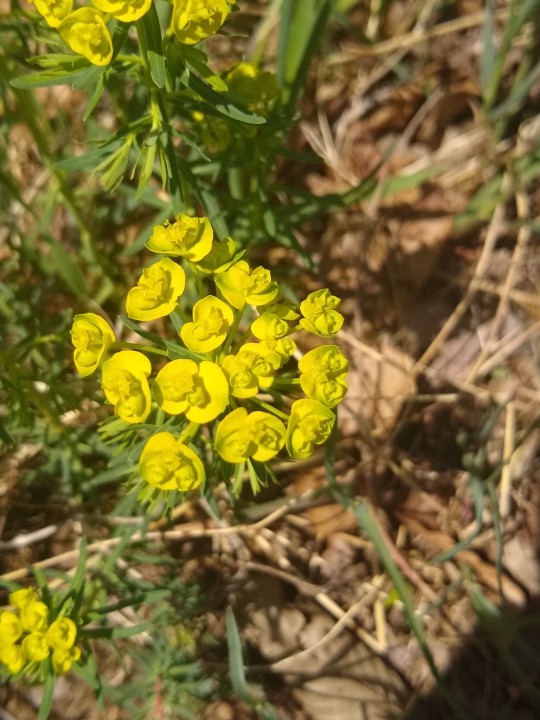
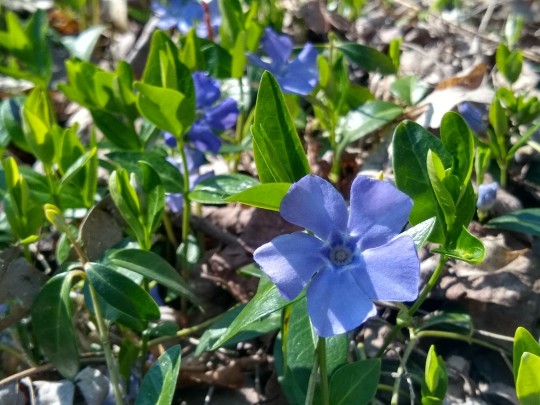

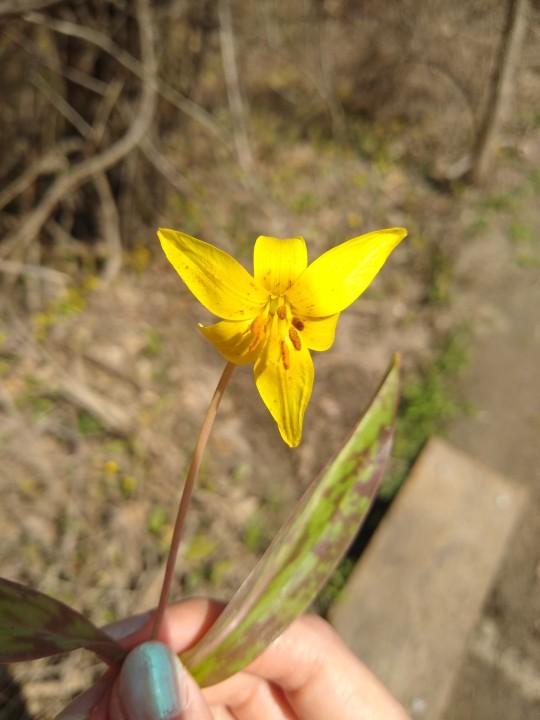
Antennaria
Euphorbia Cyparrisias (Cypress Spurge)
Vinca Minora (Perwinkle, Myrtle)
Thalictrum Thalictroide (Rue Anemone)
Erythronium Americanum (Yellow Trout Lily)
Photographed Spring 2021
#my photography#personal#wildflowers#spring#vinca minora#periwinkle#myrtle#antennaria#erythronium americanum#yellow trout lily#thalictrum thalictroides#rue anemone#euphorbia cyparissias#cypress spurge#wild flowers#cottagecore
5 notes
·
View notes
Photo

Antennaria (Pussytoes)
Who doesn’t love these little pink Pussytoes?
#flowers#photographers on tumblr#pussytoes#pink#pink aesthetic#fleurs#flores#fiori#blumen#bloemen#antennaria#rockery plants#my garden
53 notes
·
View notes
